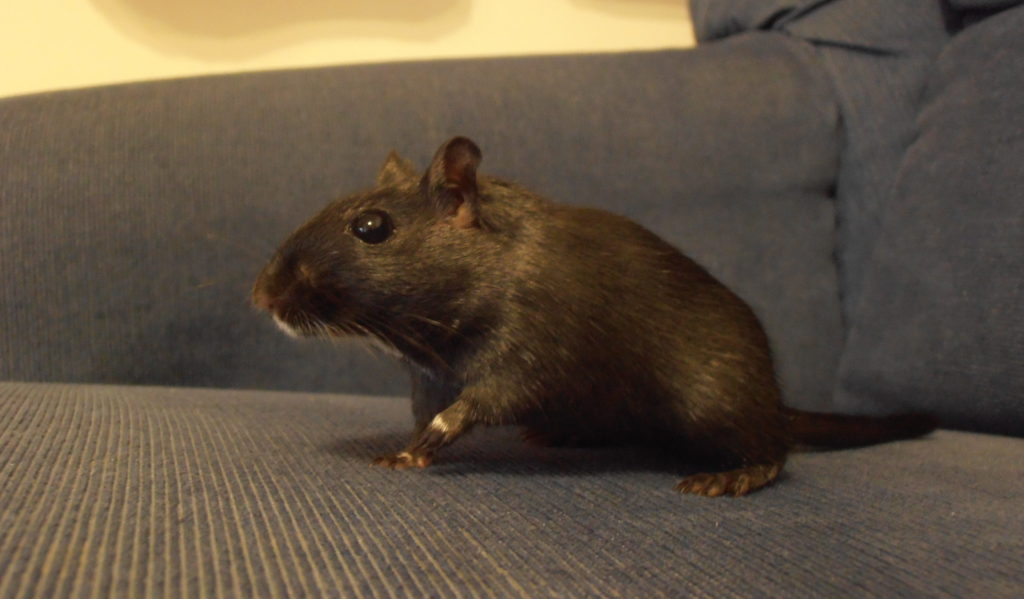This different introduction should be a relaxing read.
There are many ways to talk about gerbil genetics – and I have done this in various other linked articles – and have read many other people’s versions – but I thought it could be made even simpler.
And fun, even?
I want to use this simple analogy about feet (yes, feet) to help you get to grips with the basic premise of genes.
The whole AA and ee notations will be explained in good time – as well as helping you to understand the whole dominant and recessive thing we always talk about, so let’s start with some Dancers.
Welcome to Danceville
There is a community of people in Danceville who love dancing. They call themselves Dancers and their right feet are the secret to their good dancing.
Everyone in Danceville has two right feet and this is the true secret of their good dancing. You only actually need 1 right foot to be a good dancer; but the second right foot just makes you even better at dancing.
Everyone dances the same dances and everyone looks the same when they dance – and more importantly everyone has always looked the same when they dance.
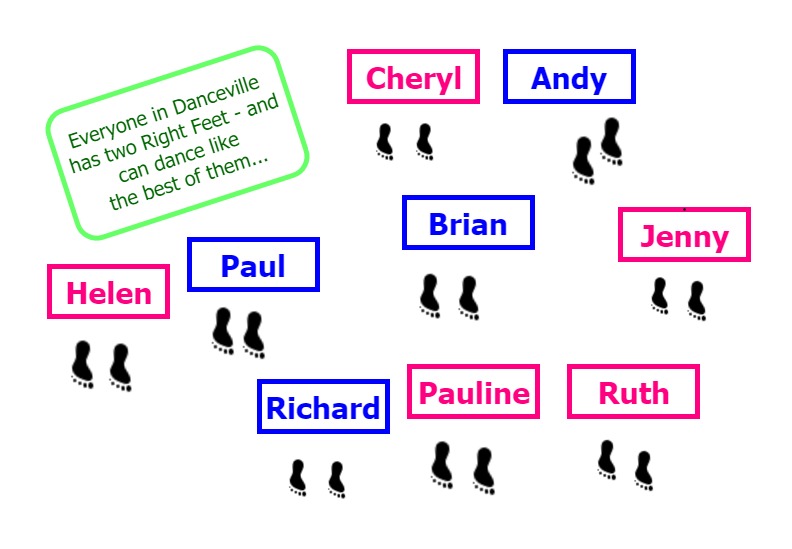
They keep their lovely right feet inside lovely decorated shoes to protect them – so nobody actually sees their feet – but we know they are there…
Dancers love to get married and start a family to produce more Dancers.
When they do so, they can pass on the genes for their lovely right feet to their offspring. But due to an obvious quirk of nature – although they have two feet themselves – they can only pass on the genes for 1 of their feet to their offspring.
The reason for this is that their children only have two legs and so can only ever inherit two feet in total – one from their mum and one from their dad.
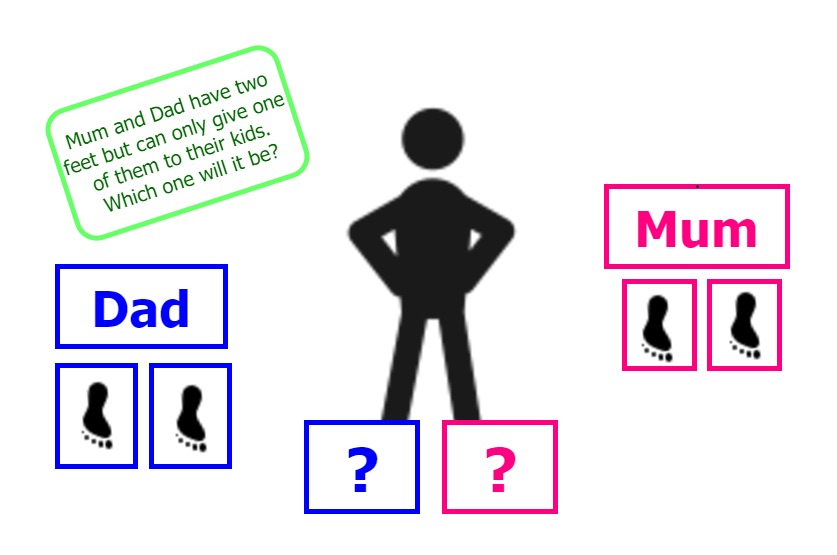
They can’t inherit both feet from both parents otherwise they would get four feet and so need four legs (which they haven’t got of course and which would make dancing most confusing).
Thinking about it – this is actually quite handy really as each baby Dancer only needs two feet anyway – so if these babies had 4 feet each then their babies would need 6 or 8 feet each and you can see this is going nowhere fast… (although with all those legs?)
Back to inheriting a single foot from each parent.
So, which foot do they pass on to their children then? Do they have a choice in the matter?
Well, no of course they don’t – we can’t control how our genes work just by wishing it – so we let nature take its course.
But nature follows rules, so she actually makes it quite easy for us to look into the future.
As we know which feet each parent has to begin with – we can set up a system where we can work out all the possible combinations of feet the children of two separate Dancers could inherit.
This is called a ‘punnet square’ calculation and this first example is really easy to work out – as everyone only has right feet.
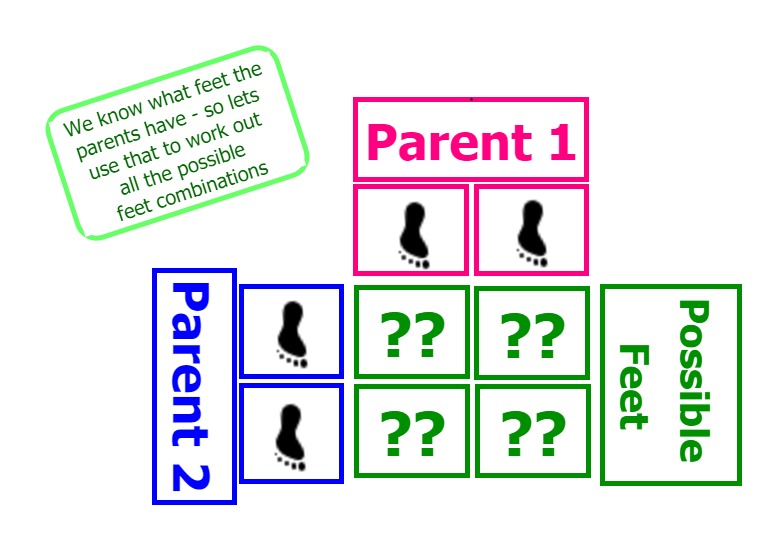
There are only 4 possible combinations of feet that can be passed on to a child using this square (hence the four empty boxes shown). The child itself isn’t actually important – we are just looking at all the possibilities feet-wise.
So, we start filling it in with the facts we already have and it starts to work out for us the possible outcomes:
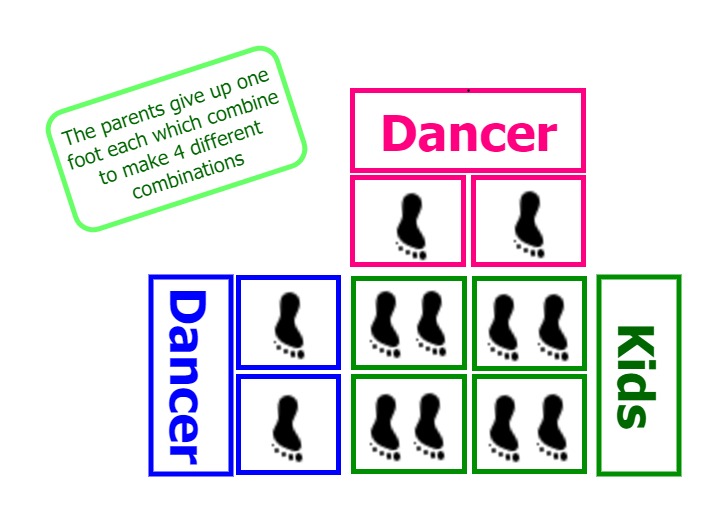
The mum only has right feet to pass on – but she has a left Right Foot and a right Right Foot, so it could be either of those she passes on.
The dad is the same, he has a left Right Foot and a right Right Foot too. Let’s call these (L) RF and (R) RF from now on otherwise we will get in a muddle.
So, we now have the possibility of having four specific offspring from these two parents starting a family:
Baby 1: Mum’s (L) RF + Dad’s (L) RF = A Dancer
Baby 2: Mum’s (L) RF + Dad’s (R) RF = A Dancer
Baby 3: Mum’s (R) RF + Dad’s (L) RF = A Dancer
Baby 4: Mum’s (R) RF + Dad’s (R) RF = A Dancer
As you will notice they all still have at least 1 Right Foot – and so they are all still Dancers. And externally – they will all look the same, just like always.
However, one day a little girl was born with a single left foot.
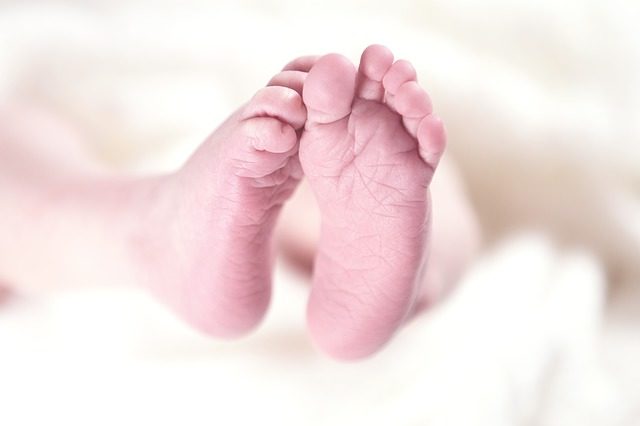
A whole left foot like never before seen in Danceville. It was a mutation for sure – but not a negative one.
This little girl, who we shall call Olivia, simply put on her lovely decorated shoes like everyone else – and although the left foot fitted inside it a little bit tight, it didn’t matter. No-one ever saw it – it was ‘hidden’. We shall call it a non-dancer foot.
This little girl was still able to dance like everyone else as she still had one Right Foot. The actions of the Right Foot are always dominant over the left – so she was still able to dance – she was a Dancer in everyone’s eyes.
The left foot remained hidden.
No-one saw it.
But won’t people see it when she starts a family? No they won’t. They only ever see the actions of the Right Feet – and if you have even just one Right Foot, that is all everyone sees.
So let’s use a Punnet Square again this time – to see what happens when she passes her left foot onto her children. I have represented her left foot as smaller than her Right Foot this time – so we can focus on the fact that the Right Foot is the dominant foot – the one you see the actions of.
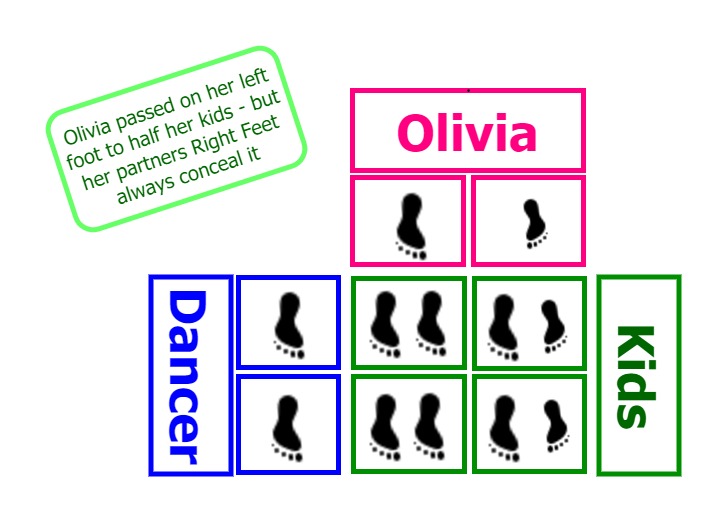
As you can see – even though a possible 50% of her offspring inherit her left foot – none of them look any different to normal Dancers – they all still have one Right Foot – so that is all you see. All her offspring are Dancers.
Some don’t even inherit her left foot and return to the standard foot formation before the mutation – 2 Right Feet. They won’t ever be able to play a role is passing on left feet as they used up their two legs with Right Feet. The left foot just didn’t make the cut.
However, even though Olivia and half of her offspring have this left foot still, every time they start a family with a normal Dancer, they will get the same results.
No matter how many times you pair a ‘Double Dancer’ (2 x Right Feet) with a Single Dancer (1 x Right Foot + 1 x left foot) – you only ever get Dancers produced.
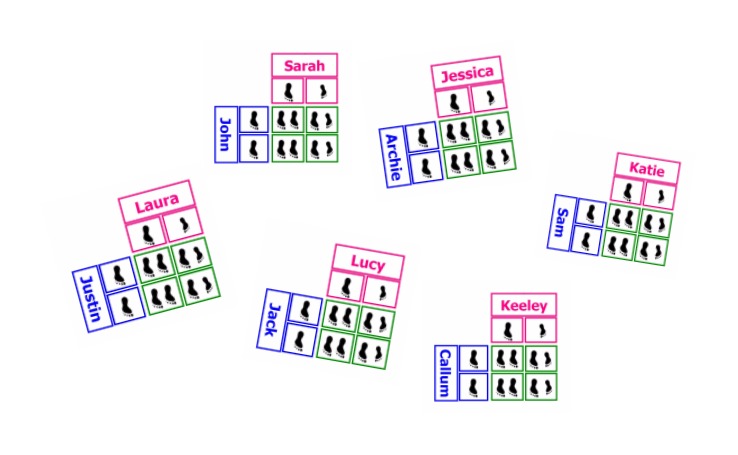
So, Olivia and her offspring carry on living their normal lives generation after generation.
Due to the fact that people in Danceville don’t inbreed or line breed with each other – this little hidden left foot stays hidden for a good while.
As long as the descendants carrying the genes for the left foot keep having enough kids, it will still be there – waiting in the wings.
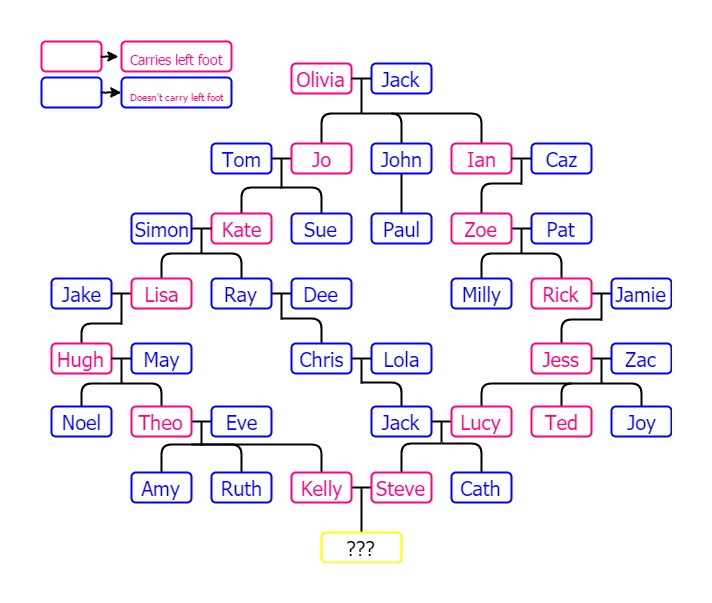
It is only when two distantly related Dancers meet up and fall in love after several generations do we see any genetic action. We shall call these Dancers Kelly and Steve.
They both carry the left foot gene – as they are both related to Olivia through various path ways – but no-one can see that they do.
All their relatives and siblings have all been Dancers just like them – so no-one suspects anything.
Until we look at their Punnet Square!
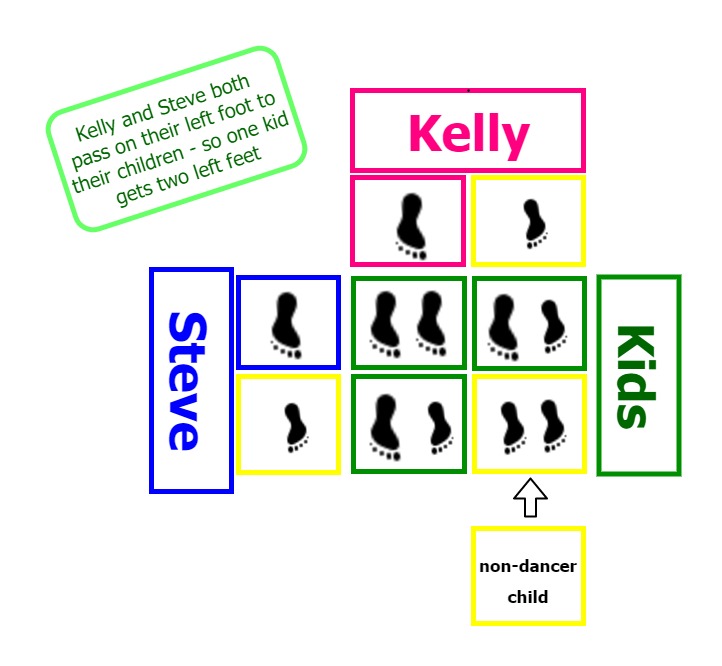
The mum – Kelly – has 1 x Right Foot to pass on – but she also has a left foot now, so it could be either of those she passes on.
The dad – Steve – is the same. He has 1 x Right Foot to pass on – but he also has a left foot, so it could be either of those he passes on.
We now have the possibility of four very different offspring from these two distantly related parents starting a family:
Baby 1: Mum’s RF + Dad’s RF = A Double Dancer
Baby 2: Mum’s RF + Dad’s LF = A Normal Dancer
Baby 3: Mum’s LF + Dad’s RF = A Normal Dancer
Baby 4: Mum’s LF + Dad’s LF = ????
As you will notice three of them still have at least 1 Right Foot – and so they are all still Dancers. And externally – they will all look the same, just like always – HOWEVER – one of them has no Right Feet at all – they can’t be a Dancer.
Previously, with only one parent having a left foot, half the kids still inherited it – but all of them still had at least one Right Foot – but now – in that final fourth square – there is a possible child with two left feet.
Most certainly – they are NOT going to be able to dance – they are not a going to be a Dancer.
With these two left feet – they are going to look totally different to all the other Dancers – their lovely decorated shoes are both going to be the wrong shape, making this child walk differently and not be able to dance at all. This child will look totally different.
She will be a non-Dancer.
She doesn’t have a dominant Right Foot, she has infact got two ‘recessive’ left feet.
She is new and exciting!
We shall call her A Walker.
All the Dancers think she is amazing and unique and so they want their own family to have non-dancers in them – they want some Walkers of their own!
They offer her all their sons as potential husbands, and this new gene will slowly spread through the population.
The End…
… and the beginning?
Now, all we need to do is swap the words around – and you have your Gerbil Genetics 101 lesson complete.
Don’t believe me? Then read on…
We are swapping the words Right Feet for Agouti Gene; and Dancers for Agouti Gerbils – we are keeping it real simple.
We are also adding letters in place of the images of feet. The larger Right Foot will take on a capital ‘A’ and the smaller left foot will take on a small ‘a’. Genetic notations always do this – they give the Dominant Gene a capital letter (upper case) that represents it well, and they give the recessive version of that same gene a lower case form of that same letter.
So in this basic example, it is the Agouti Gene we are talking about and so we use the letter A – and the dominant version is represented as ‘A’ and the recessive version is represented as ‘a’.
Welcome to Agoutiville
There is a community of gerbils living in Agoutiville who love looking Agouti coloured. They call themselves Agouti Gerbils and their speckled coat and white tummies are what make them so good at being Agouti.
Everyone in Agoutiville has this speckled coat and this is the secret of their Agoutiness. You only actually need 1 Agouti gene to be an Agouti; but the second Agouti Gene just makes you more likely to have more Agouti pups.
Everyone looks the same when they are all Agoutis – and more importantly everyone has always looked the same – everyone looks Agouti.
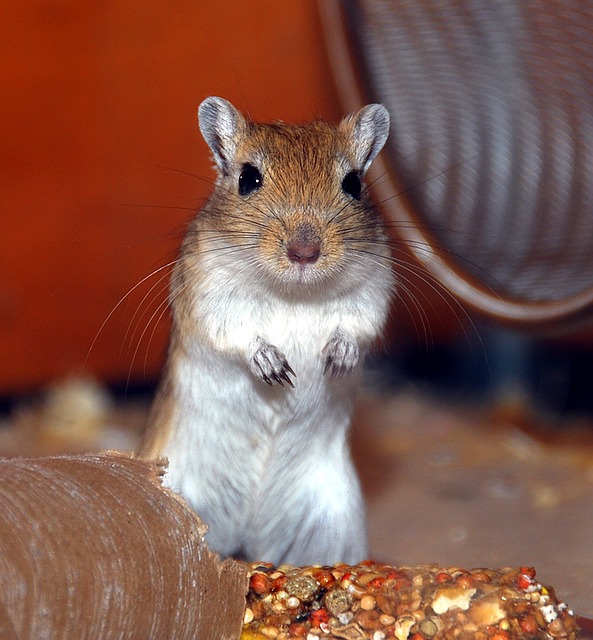
They keep their Agouti Genes inside their DNA to protect them – so nobody actually sees their Agouti Genes – but we know they are there…
Agouti gerbils love to bond with a partner and start a family to produce more Agouti gerbils.
When they do so, they can pass on the genes for their lovely Agouti colour to their offspring. But due to an obvious quirk of nature – although they have two Agouti Genes themselves – they can only pass on the genes for 1 of their Agouti Genes to their offspring.
The reason for this is that their offspring only have two locus points for Agouti Genes and so can only ever inherit two genes in total – one from their mum and one from their dad.
They can’t inherit both Agouti Genes from both parents otherwise they would get four Agouti Genes and so need four locus points (which they haven’t got of course).
Thinking about it – this is actually quite handy really as each baby Agouti gerbil only needs two genes anyway – so if these babies had 4 genes each then their babies would need 6 or 8 genes each and you can see this is going nowhere fast…
Back to inheriting a gene from each parent.
So, which gene do they pass on to their children then? Do they have a choice in the matter?
Well, no of course they don’t – we can’t control how our genes work just by wishing it – so we let nature take its course.
But nature follows rules, so she actually makes it quite easy for us to look into the future.
As we know which genes each parent has to begin with – we can set up a system where we can work out all the possible combinations of genes the children of two separate Agoutis could inherit.
This is called a ‘Punnet Square’ calculation and this first example is really easy to work out – as everyone only has Agouti Genes.
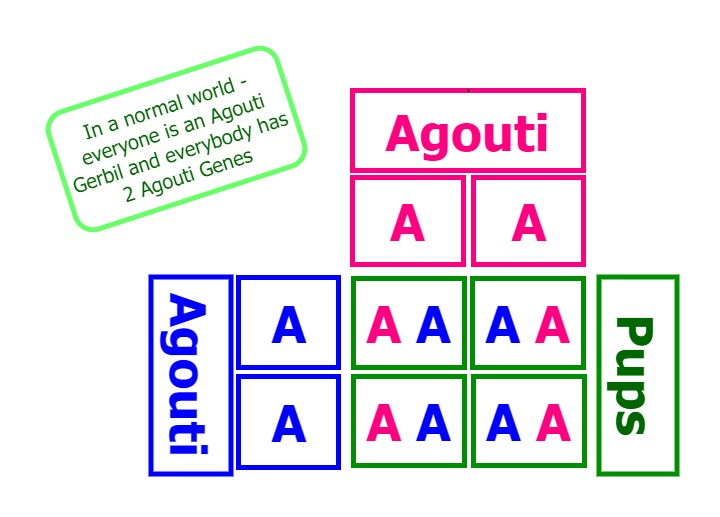
There are only 4 possible combinations of genes that can be passed on to any one offspring using this square. The individual pup itself isn’t actually important – we are just looking at all the possibilities genes-wise.
The mum only has Agouti Genes to pass on – but she has a left Agouti Gene and a right Agouti Gene, so it could be either of those she passes on.
The dad is the same, he has a left Agouti Gene and a right Agouti Gene too. Let’s call these (L) A and (R) A from now on.
So we now have the possibility of having four specific offspring from these two parents starting a family:
Baby 1: Mum’s (L) A + Dads (L) A = An Agouti Gerbil
Baby 2: Mum’s (L) A + Dads (R) A = An Agouti Gerbil
Baby 3: Mum’s (R) A + Dads (L) A = An Agouti Gerbil
Baby 4: Mum’s (R) A + Dads (R) A = An Agouti Gerbil
As you will notice they all still have at least 1 A – 1 Agouti Gene – and so they are all still Agouti Gerbils. And externally – they will all look the same, just like always.
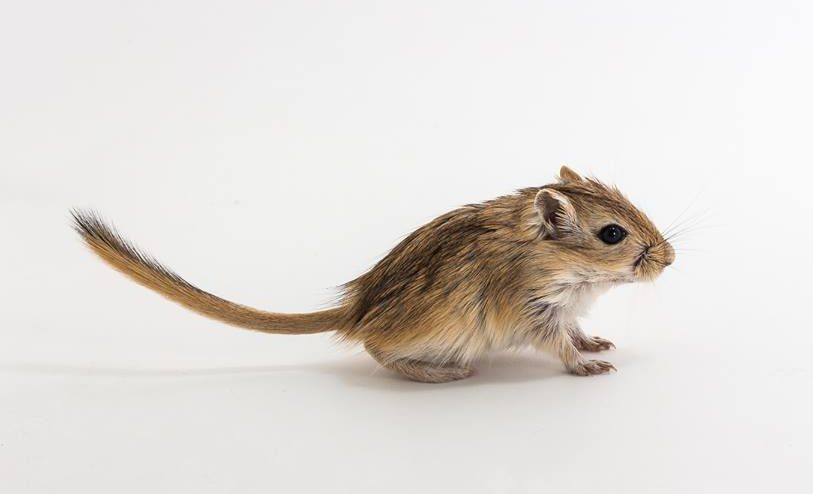
However, one day a little gerbil was born with a small ‘a’ (not a capital one). We shall call this a non-agouti version.
A small ‘a’ had never before been seen in Agoutiville. It was a mutation for sure – but not a negative one.
This little gerbil, who we shall call Olivia, simply carried on like before – totally normally. No-one ever saw it. It was ‘hidden’. We shall call it the non-agouti gene.
This little gerbil was still able to be an Agouti Gerbil as like everyone else she still had one Agouti Gene. The actions of the dominant Agouti Gene are always dominant over the little recessive a – so she was still able to be an Agouti – she was an Agouti gerbil in everyone’s eyes.
The little a remained hidden.
No-one saw it.
But won’t people see it when she starts a family? No they won’t. They only ever see the actions of the dominant Agouti Gene – so if you have even only just one dominant Agouti Gene, that is all everyone sees.
So let’s use a Punnet Square this time – to see what happens when she passes her little ‘a’ – her non-agouti gene – onto her offspring. I have represented her non-agouti gene as a small letter ‘a’ here and her dominant Agouti Gene as a capital letter ‘A’ here – so we can focus on the fact that the A gene is the dominant gene – the one you see the actions of.
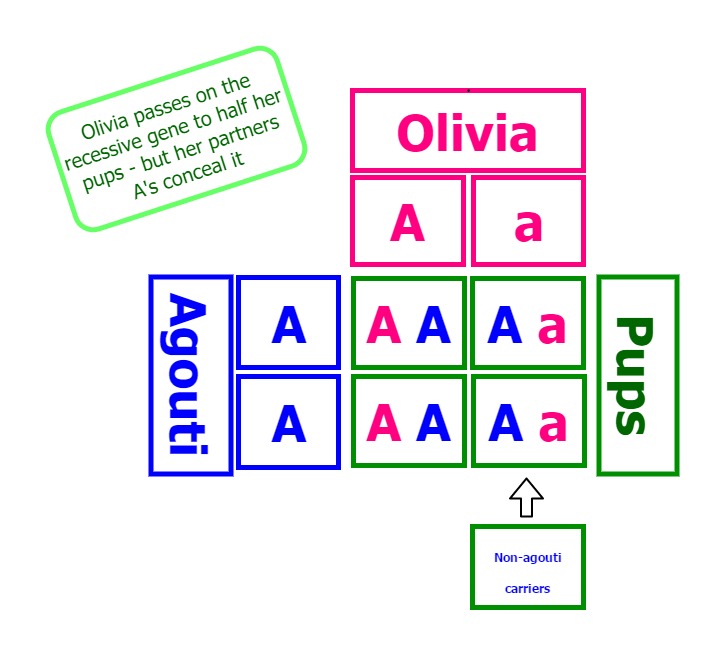
As you can see – even though a possible 50% of her offspring inherit her non-agouti gene – none of them look any different to normal Agoutis – they all still have one Agouti Gene – so that is all you see. All her offspring are Agouti.
Some don’t even inherit her non-agouti gene and return to the standard Agouti formation before the mutation (AA). They won’t ever be able to play a role is passing on the non-agouti gene as they used up their two locus points with dominant Agouti Genes. The non-agouti gene just didn’t make the cut.
However, even though Olivia and half of her offspring have this non-agouti gene still (this recessive gene), every time they start a family with a normal Agouti, they will get the same results. No matter how many times you pair a ‘Double Agouti’ (2 x Agouti Genes) with a Single Agouti (1 x Agouti Gene + 1 x non-agouti) – you only ever get Agouti produced.
So, Olivia and her offspring carry on living their normal lives generation after generation.
Due to the fact that people in Agoutiville don’t inbreed or line breed with each other – this little hidden non-agouti gene stays hidden for a good while.
As long as the descendants carrying the genes for the non-agouti form keep having enough pups, it will still be there – waiting in the wings.
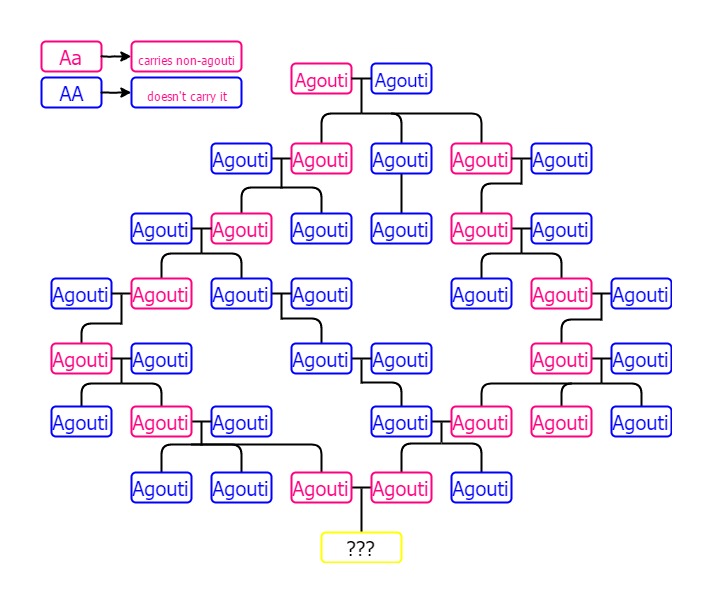
It is only when two distantly related Agoutis meet up and fall in love after several generations do we see any genetic action. We shall call these Agoutis Kelly and Steve, no let’s call them Fraggle and Pumpkin.
They both carry the non-agouti gene – as they are both related to Olivia through various path ways – but no-one can see that they do.
All their relatives and siblings have all been Agoutis just like them – so no-one suspects anything.
Until we look at their Punnet Square!
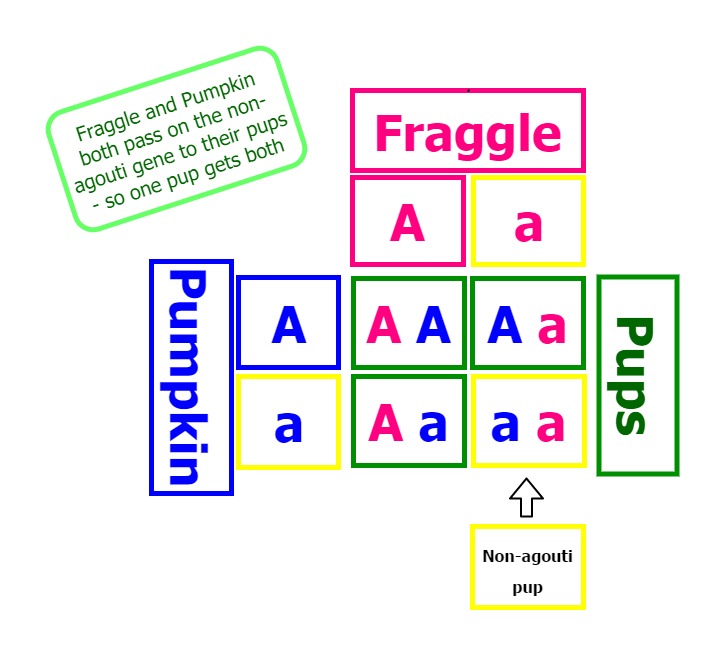
We now have the possibility of four very different offspring from these two related parents starting a family:
Baby 1: Mum’s A + Dad’s A = A Double Agouti
Baby 2: Mum’s A + Dad’s a = A Normal Agouti
Baby 3: Mum’s a + Dad’s A = A Normal Agouti
Baby 4: Mum’s a + Dad’s a = ????
As you will notice three of them still have at least 1 dominant Agouti Gene – and so they are all still Agouti coloured. Externally – they will all look the same, just like always – HOWEVER – one of them has no dominant agouti genes at all – they can’t be an Agouti coloured gerbil?
Previously, with only one parent having the non-agouti gene, half the pups inherited it – but all of them still had at least one dominant Agouti Gene – but now – in that final fourth square – there is a possible child with two non-agouti genes.
Most certainly – they are NOT going to be able to be an Agouti Coloured Gerbil – they are not a going to be an Agouti.
With these two non-agouti genes – they are going to look totally different to all the Agoutis. The actions of these non-agouti genes are going to look totally different to before as they will take away the ticking and white tummy that all Agoutis have – you will be able to see that these offspring are not Agoutis. This pup will look totally different.
They will be a non-Agouti.
They don’t have a dominant Agouti Gene, they have infact got two ‘recessive’ non-agouti genes.
They are new and exciting!
We shall call them ‘a Black Gerbil’.
All the Gerbil Breeders think she is amazing and unique and so they want their own clan to have non-agouti genes in them – they want some Black Gerbils of their own!
They offer her all their sons as potential breeding partners, and this new gene will slowly spread through the population…
